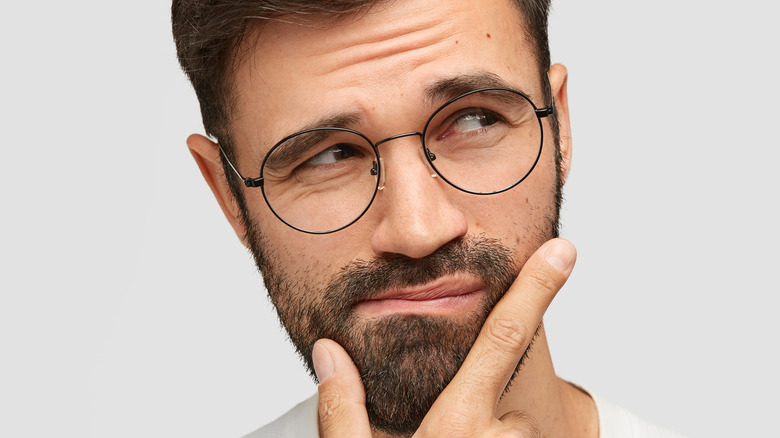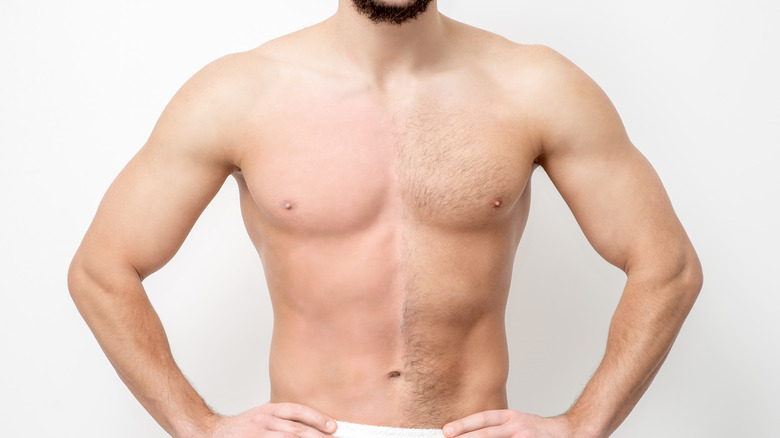The Real Reason Men Have More Body Hair
It's no secret that men have more body hair than women. Body hair tends to grow on their face, chest, and back naturally. For women, not so much. What gives?
Before birth, sex hormones called androgens indicate the physique development of males, according to a study by the Federation of American Societies for Experimental Biology. Although androgens are present in both men and women, they are typically higher in men — hence the misnomer "male sex hormones" (via HealthyWomen). The principal hormones are testosterone and androstenedione, which increase during puberty for males. Everyone is born covered in tiny and fine hairs called vellus hairs. In males, sex hormones increase to replace them with darker, larger hairs, called terminal hairs (via the Federation of American Societies for Experimental Biology).
Scientists aren't sure why terminal hairs can show up on the face in the form of beards but not on other areas of facial hair, like eyelashes and eyebrows. In some men, certain hairs are inhibited by androgens, causing balding. However, since organs that affect androgens, like the prostate, are generally difficult to study, scientists can't offer a research-backed explanation for this.
Since women tend to have lower levels of these androgens, terminal hairs don't typically replace the vellus hairs everyone has at birth. For some women, however, certain follicles are exposed to higher levels of androgens, causing coarser, darker hair growth that mimics male growth patterns (via WebMD). This type of hair growth is called hirsutism, a condition that approximately 5% of women in the U.S. experience.
What's up with body hair, anyway?
Due to evolution, humans appear to have much less hair than primates, according to the International Journal of Trichology. In fact, we have the same amount of hairs as an ape — about 60 hairs per square centimeter. Over time, human hair evolved to become smaller and less pigmented than other great apes' hair so that primitive men could sweat more easily when living in the African Savanna mosaic habitat. The biological functions of present-day human hair are almost immeasurable. Nose and ear hair protect against the environment, eyebrows prevent sweat from dripping into the eyes, and head hair stabilizes the brain's temperature. There are many more biological implications of human body hair.
According to a study in Behavioral Ecology, a modern-day woman's preference for a man's body hair seems to change according to their menstrual cycle and menopause. For example, the study observed that pre-menopausal Finnish women at the height of fertility tended to prefer men with less torso body hair, while post-menopausal women preferred hairier men. This was also in direct correlation to the hairiness of their fathers, suggesting that this preference could be heritable.
Body hair is incredibly intricate, but scientists can better understand its complexities with studies and experiments that involve examining hormones.


